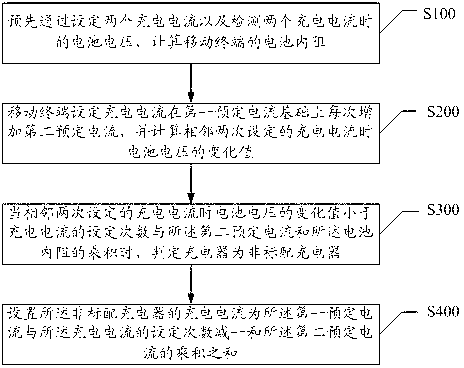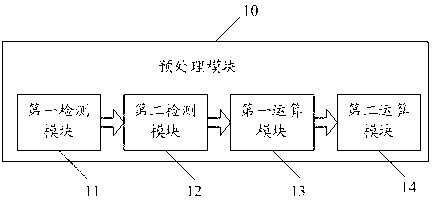Method and system capable of automatically recognizing non-standard charger and setting charging current of non-standard charger
A charging current and automatic identification technology, which is applied to collectors, circuit devices, battery circuit devices, etc., can solve the problems of low charging voltage, failure to charge, damage to the charger, etc., achieve reasonable settings, increase hardware costs, and facilitate implementation Effect
- Summary
- Abstract
- Description
- Claims
- Application Information
AI Technical Summary
Problems solved by technology
Method used
Image
Examples
Embodiment Construction
[0045] In order to make the object, technical solution and advantages of the present invention more clear and definite, the present invention will be further described in detail below with reference to the accompanying drawings and examples. It should be understood that the specific embodiments described here are only used to explain the present invention, not to limit the present invention.
[0046] When charging with a charger, due to the loss of the charging circuit and the power consumption of mobile terminals such as mobile phones, the charging current will be divided into two parts, one part is the power consumption current of the mobile terminal, and the other part is the charging current into the battery. Since the power consumption of the mobile terminal is different at different charging moments, the power consumption current of the mobile terminal needs to be calibrated. In addition, due to the existence of the internal resistance of the mobile terminal, the chargin...
PUM
 Login to View More
Login to View More Abstract
Description
Claims
Application Information
 Login to View More
Login to View More - R&D
- Intellectual Property
- Life Sciences
- Materials
- Tech Scout
- Unparalleled Data Quality
- Higher Quality Content
- 60% Fewer Hallucinations
Browse by: Latest US Patents, China's latest patents, Technical Efficacy Thesaurus, Application Domain, Technology Topic, Popular Technical Reports.
© 2025 PatSnap. All rights reserved.Legal|Privacy policy|Modern Slavery Act Transparency Statement|Sitemap|About US| Contact US: help@patsnap.com



